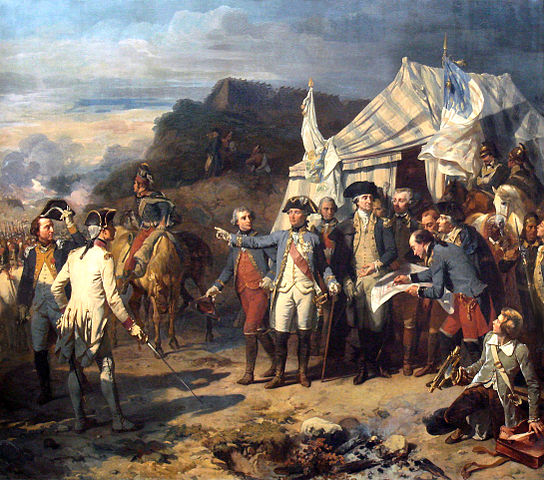The Stovin Brothers: Soldiers of Whitgift
The hamlet of Whitgift in the corner of East Yorkshire is known for its church clock bearing the number thirteen, and for Whitgift Hall built in 1704. But it was also the birthplace of two brothers, whose active military careers probably prevented them from seeing much of their home village. Richard and Frederick Stovin were the two younger sons of James Stovin. Richard's birth date is unknown, but he joined the army in 1780. Frederick was born in 1783.
Richard's career started in the American War of Independence. He joined the 17th Regiment of Foot and served at the end of the war. His regiment was present at the battle of Yorktown, and was taken prisoner by the victorious Americans. Stovin rose through the ranks in the 17th during and after the war and was promoted to captain in 1788.
In the 1790s Stovin sailed with the 17th to the West Indies for the French Revolutionary Wars, taking part in the battle of Martinique. He was active in the landings at San Lucia, and was commended for his part in seizing the forts there. He also took part in the invasion of Guadeloupe, being captured by the French in 1794 and being held prisoner till 1796.
On his release, he was promoted to major and held a staff position in Canada before returning to battle, raising two new battalions in England for the Helder expedition in 1799. He returned to the 17th and was stationed in India. He led the regiment at the siege of Chumar in 1807 and later commanded a whole brigade on the subcontinent.
In the war of 1812 Stovin was posted to Canada and undertook various commands. Stovin Island in the St. Lawrence River is named after him. He was promoted to the rank of lieutenant-general in 1821, and died in 1825.
The younger brother Frederick began his campaign in the Napoleonic wars in 1800. Initially posted to Spain, he served in Germany and Denmark. He saw fighting at the Battle of Copenhagen in 1807, returning to Spain for the Battle of Corunna in 1809.
In the war of 1812 Stovin was posted to New Orleans, where he was wonded in the Battle of New Orleans in 1814/15. On return to England he was involved in the misconduct case of Thomas Mullins, a circumstance that prevented his being at Waterloo where he had been due to serve.
Stovin held various commands till his retirement from active service in 1829, but never saw battle. He lived till 1865, attaining a knighthood and the rank of a full general.



